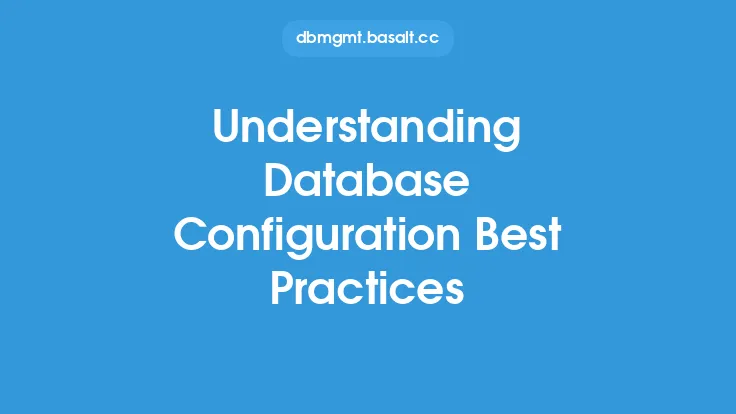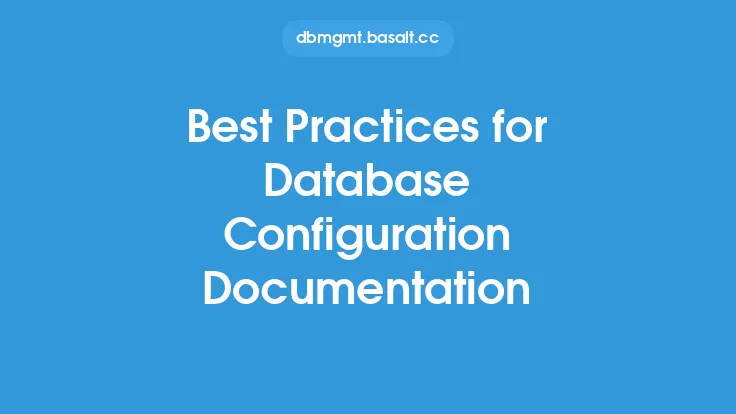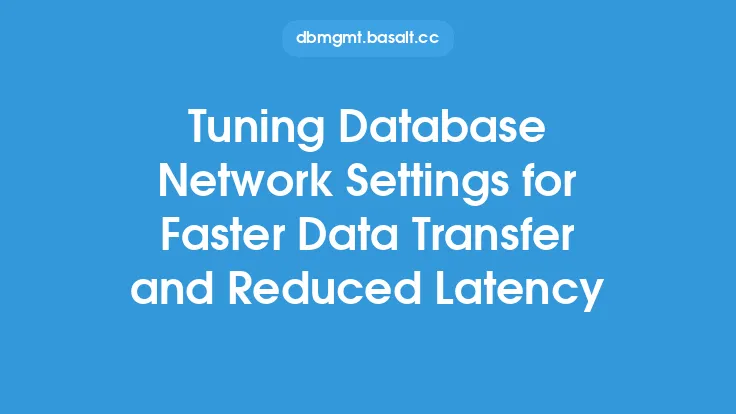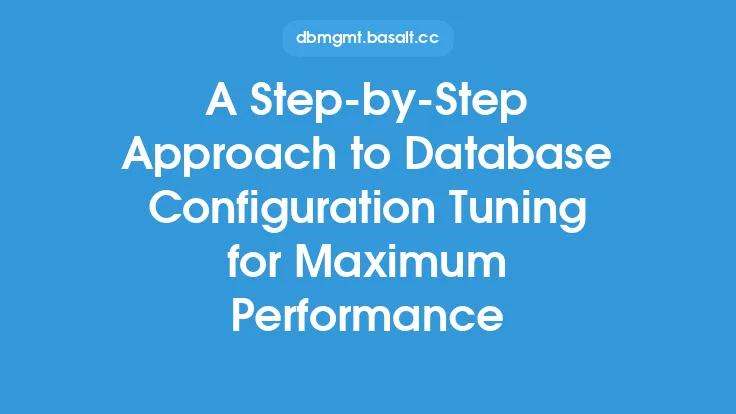Database connection pooling is a technique used to improve the performance and scalability of applications that interact with databases. It involves creating a pool of database connections that can be reused by multiple requests, rather than creating a new connection for each request. This approach can significantly reduce the overhead of creating and closing connections, resulting in faster response times and improved overall system performance.
Introduction to Database Connection Pooling
Database connection pooling is a widely used technique in application development, particularly in environments where multiple users or requests need to access a database simultaneously. The basic idea behind connection pooling is to maintain a pool of open database connections that can be borrowed and returned as needed. When an application needs to interact with the database, it requests a connection from the pool. If a connection is available, it is returned to the application; otherwise, a new connection is created and added to the pool. Once the application has finished using the connection, it is returned to the pool, where it can be reused by other requests.
Benefits of Database Connection Pooling
The benefits of database connection pooling are numerous. Some of the most significant advantages include:
- Improved performance: By reusing existing connections, the overhead of creating and closing connections is reduced, resulting in faster response times.
- Increased scalability: Connection pooling allows a larger number of users or requests to access the database simultaneously, without a significant decrease in performance.
- Better resource utilization: By reusing connections, the number of open connections to the database is reduced, resulting in more efficient use of system resources.
- Enhanced reliability: Connection pooling can help to improve the reliability of applications by reducing the likelihood of connection-related errors.
Configuration Best Practices
To get the most out of database connection pooling, it's essential to configure the pool correctly. Here are some best practices to keep in mind:
- Initial pool size: The initial pool size should be set to a value that is sufficient to handle the expected load. A good starting point is to set the initial pool size to the number of concurrent requests that the application is expected to handle.
- Maximum pool size: The maximum pool size should be set to a value that is sufficient to handle peak loads, but not so high that it causes the system to run out of resources.
- Connection timeout: The connection timeout should be set to a value that is long enough to allow connections to be established, but not so long that it causes the application to hang.
- Idle connection timeout: The idle connection timeout should be set to a value that is long enough to allow connections to remain idle, but not so long that it causes connections to remain open indefinitely.
Tuning Database Connection Pooling
Tuning database connection pooling involves adjusting the configuration parameters to optimize performance. Here are some tips for tuning connection pooling:
- Monitor pool usage: Monitor the pool usage to determine if the initial pool size and maximum pool size are set correctly.
- Adjust the connection timeout: Adjust the connection timeout to ensure that connections are established quickly, but not so quickly that it causes the application to hang.
- Adjust the idle connection timeout: Adjust the idle connection timeout to ensure that connections remain open for a sufficient amount of time, but not so long that it causes connections to remain open indefinitely.
- Use connection validation: Use connection validation to ensure that connections are valid before they are returned to the pool.
Common Connection Pooling Algorithms
There are several connection pooling algorithms that can be used, each with its own strengths and weaknesses. Some of the most common algorithms include:
- First-in, first-out (FIFO): This algorithm returns the oldest connection in the pool to the application.
- Last-in, first-out (LIFO): This algorithm returns the most recently used connection in the pool to the application.
- Random: This algorithm returns a random connection from the pool to the application.
- Least recently used (LRU): This algorithm returns the least recently used connection in the pool to the application.
Connection Pooling in Different Database Systems
Different database systems have different connection pooling mechanisms. Here are some examples:
- Oracle: Oracle uses a connection pooling mechanism called the "Oracle Connection Pooling" mechanism.
- MySQL: MySQL uses a connection pooling mechanism called the "MySQL Connection Pooling" mechanism.
- PostgreSQL: PostgreSQL uses a connection pooling mechanism called the "PgBouncer" mechanism.
- Microsoft SQL Server: Microsoft SQL Server uses a connection pooling mechanism called the "SQL Server Connection Pooling" mechanism.
Best Practices for Connection Pooling in Cloud-Based Environments
Cloud-based environments have different requirements for connection pooling than traditional on-premises environments. Here are some best practices for connection pooling in cloud-based environments:
- Use a cloud-based connection pooling service: Cloud-based connection pooling services, such as Amazon RDS Proxy, can provide a scalable and reliable connection pooling mechanism.
- Configure the pool size based on the expected load: The pool size should be configured based on the expected load, taking into account the number of concurrent requests and the resources available.
- Monitor pool usage: Monitor pool usage to determine if the initial pool size and maximum pool size are set correctly.
- Adjust the connection timeout: Adjust the connection timeout to ensure that connections are established quickly, but not so quickly that it causes the application to hang.
Conclusion
Database connection pooling is a powerful technique for improving the performance and scalability of applications that interact with databases. By configuring the pool correctly and tuning the connection pooling parameters, developers can significantly improve the performance and reliability of their applications. Whether in traditional on-premises environments or cloud-based environments, connection pooling is an essential technique for any application that interacts with a database. By following the best practices outlined in this article, developers can ensure that their applications are optimized for performance and scalability.





